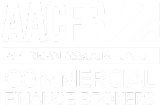Disclaimer: This article is for informational purposes only and should not be considered tax advice. Please consult your tax advisor or accountant to understand how Section 179 applies to your specific situation.
Introduction:
As we approach the end of the year, it’s time for businesses to start thinking about year-end tax planning. One of the most impactful ways to reduce your taxable income is by taking advantage of the Section 179 tax deduction, which allows companies to deduct the full cost of qualifying equipment and software in the year it’s purchased.
Here’s what you need to know about Section 179 and how it can benefit your business before the year closes out.
What is Section 179?
Section 179 of the IRS tax code allows businesses to deduct the entire purchase price of qualifying equipment and software purchased or financed during the tax year. This upfront deduction differs from standard depreciation, which spreads the cost over several years. By taking the deduction all at once, businesses can keep more cash in their pocket immediately.
How Much Can You Deduct?
For the 2025 tax year, businesses can deduct up to $2,500,000 of the total equipment purchases. However, if your total purchases exceed $4,000,000 the deduction begins to phase out. This makes Section 179 especially valuable for small and mid-sized businesses that are making equipment investments.
Interaction with Bonus Depreciation
In addition to Section 179, the 2025 “One Big Beautiful Bill” restored 100% bonus depreciation for qualifying property placed in service after January 19, 2025. That means after applying your Section 179 deduction, you may also be able to fully expense the remaining cost of eligible equipment immediately. This combination can significantly increase tax savings for businesses making large year-end purchases.
What Qualifies for Section 179?
To qualify, your business needs to purchase or finance qualifying new or used equipment or software. Eligible items include:
- Machinery and heavy equipment
- Business-use vehicles (with weight restrictions)
- Office furniture and fixtures
- Computers and business software
- Improvements to nonresidential buildings (like HVAC or fire alarm systems)
Why Section 179 is a Financial Game-Changer
Section 179 provides a significant tax benefit by allowing businesses to deduct the full cost of equipment in the year of purchase, rather than depreciating it over time. This immediate deduction improves cash flow, reduces taxable income, and enables businesses to reinvest their savings back into growth.
For example, if you purchase $100,000 worth of equipment, Section 179 lets you deduct that entire amount in the 2025 tax year. Without Section 179, you’d be forced to depreciate that amount over several years.
Section 179 Example in Action
Suppose a business buys $250,000 in equipment this year. Under the revised limits, it could fully deduct the $250,000 because it’s well under both the $2,500,000 cap and still below the phase-out threshold.
How to Claim Section 179
To claim the Section 179 deduction, you’ll need to fill out IRS Form 4562 and include it with your 2025 tax return. Be sure to keep detailed records of the equipment or software purchases you’re deducting and confirm they meet IRS requirements.
Other Caveats
You can’t deduct more than your net business income from active operations. If usage falls below 50% business use later, recapture rules may require you to report some income.
Important Deadline: December 31, 2025
To take advantage of Section 179 for the 2025 tax year, your equipment must be purchased, financed, or leased and put into service by December 31, 2025 (i.e. ready and available for use). That means if you’re planning to make major equipment investments, now is the time to act.
Conclusion:
As the year comes to a close, Section 179 offers businesses a smart way to reduce their tax burden while investing in future growth. By deducting the full cost of qualifying equipment upfront, you’ll improve cash flow and free up resources to reinvest in your business. Be sure to act by December 31, 2025, to maximize this valuable benefit.










